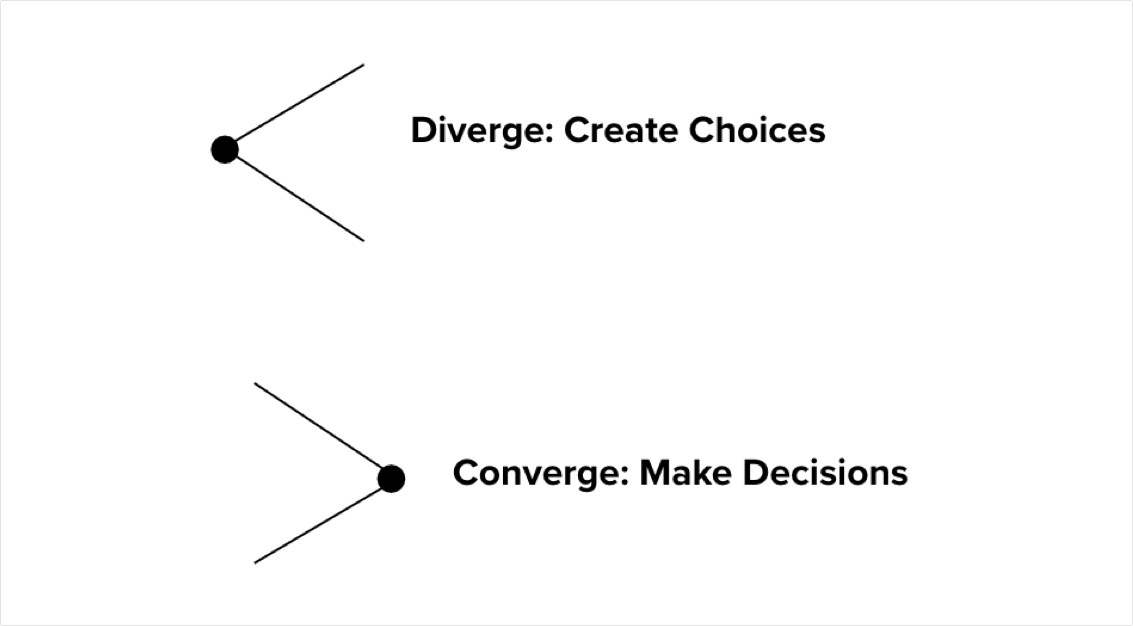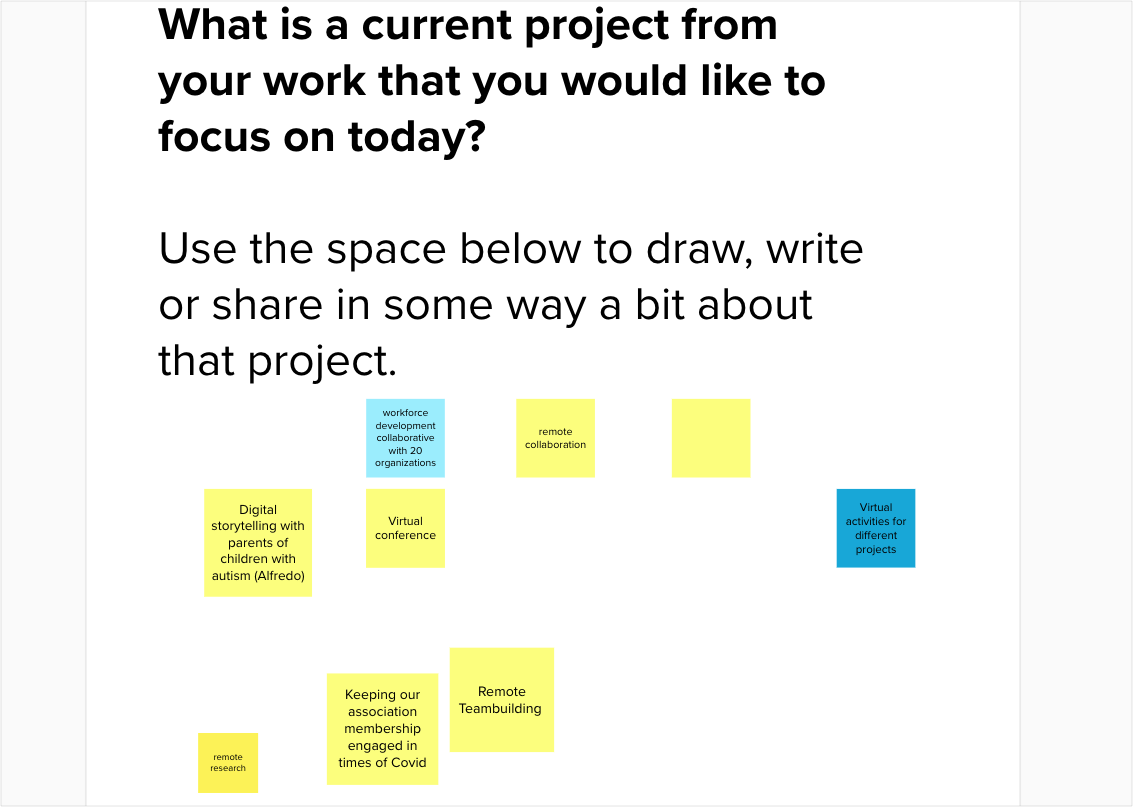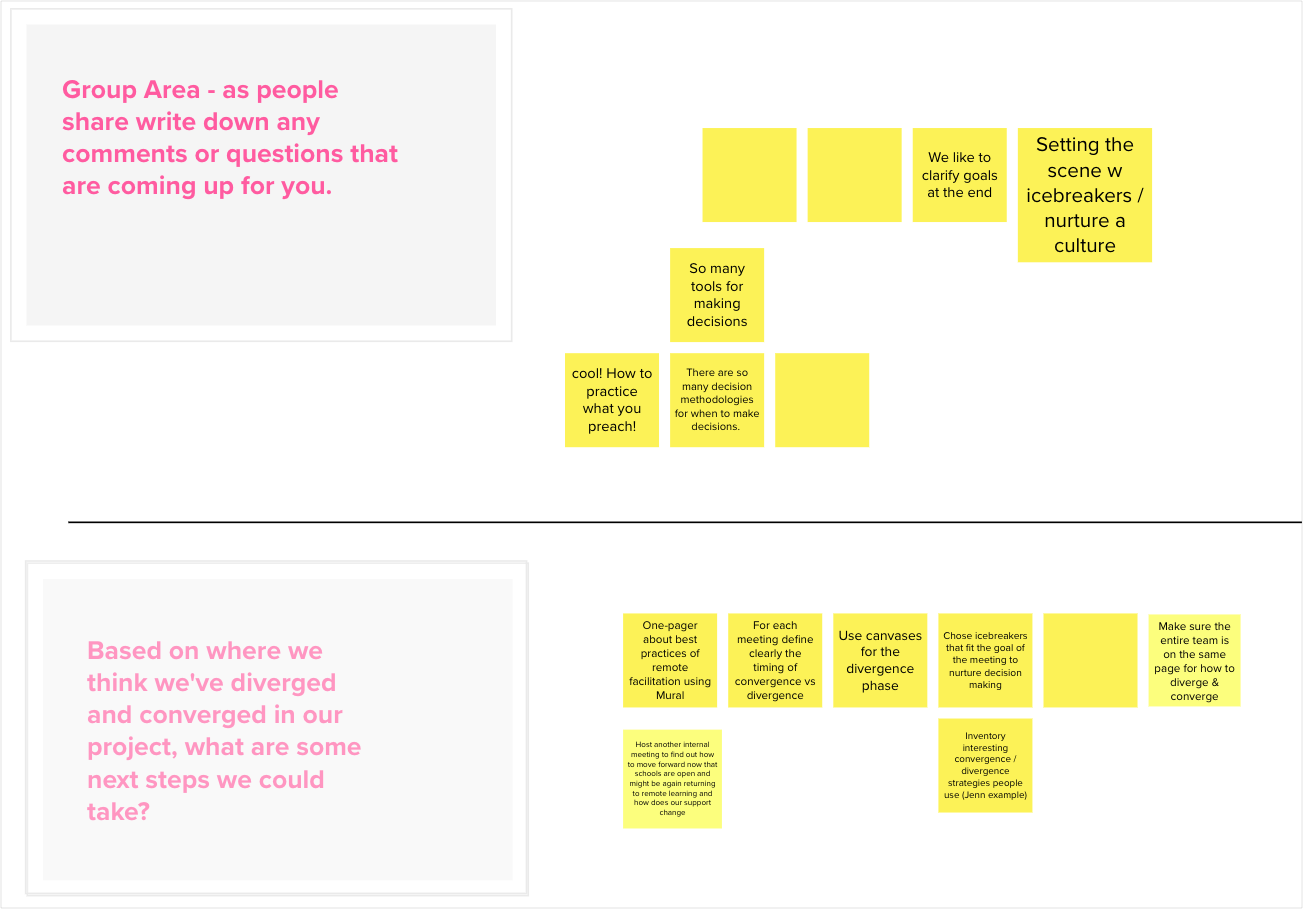This article originally appeared in the MURAL blog.
Facilitate meaningful conversations to align your team during long-term, complex collaborations using MURAL.
We’ve all worked on complex, long-term projects involving multiple stakeholders — projects where there is no one solution or answer. Managing that complexity can mean the difference between a successful outcome and an unsuccessful one.
To help you solve this challenge, here is a new strategy that uses collaboration to bring order to a long, time-consuming project.
Service designer and founder of Moxie, Catherine Collins, and professor and action researcher, Alfredo Ortiz Aragón led an exclusive working session for MURAL’s nonprofit customers to share tools they have developed for bringing order and clarity to the difficult phases of a project.
Read on — or watch the recorded session — to learn these techniques for yourself. Look out for Catherine’s tips on how to facilitate a similar session with your own teams below.
Why should you use this framework?
- Make space for all team members to step back and reflect on the project
- Increase comfort levels within the team by embracing moments of divergence and convergence
- Introduce a common language around when to create choices and when to make choices
- Bring clarity to yourself and your team during overwhelming moments in a long-term, complex project

Finding where it is natural to diverge and converge
Early in the session, Catherine and Alfredo explained the importance of diverging and converging — recognizing when more opportunities should be created versus when decisions need to be made.
Convergence and divergence are concepts that design thinking borrowed from psychology — but they’re useful techniques for everyone, not just designers.
Divergent moments are when you are creating choices. This can be done through interviews, collecting information, and data.
There is a lot of possibility in divergent moments.
Converging is about making decisions. This can be done using the information and data collected during divergence.
After a quick explanation of these terms, participants reflected on current ongoing projects that they wanted to bring some order to.

The “Let’s Take a Moment” exercise
To analyze the projects they had selected, participants went through the Let’s Take a Moment Tool that was developed by Catherine and Alfredo at Moxie. The tool encourages teams to think about diverging and converging moments at each stage of a project and to understand when to make decisions versus continue to create possibilities.
Reflecting on where we are, to figure out where we could go
The initial steps in the framework are about identifying the moments when they've created choices (diverge) and when they've made choices (converge) at the project level, in meetings, and in informal conversations.

Reflecting on where we can go
After individuals reflected on their own, Catherine and Alfredo had everyone discuss in breakout groups what they noticed while going through the questions. Participants then came back together to share out what came up in their groups. To increase the engagement of everyone in the group, there is a section in the template dedicated to capturing ideas, further questions or comments. After each group shared their ideas and conclusions, everyone individually contributed next steps to work on after the session.
Working through this tool with your team will leave each individual with an understanding of where they are in a project and where they will be going.

“Every tool or method is just a lens through which we can look at the world. Ultimately, they help us to connect as people, in meaningful conversations and actions. It’s successful not if we did it right, but whether it produced good conversation or not.”